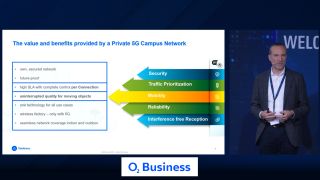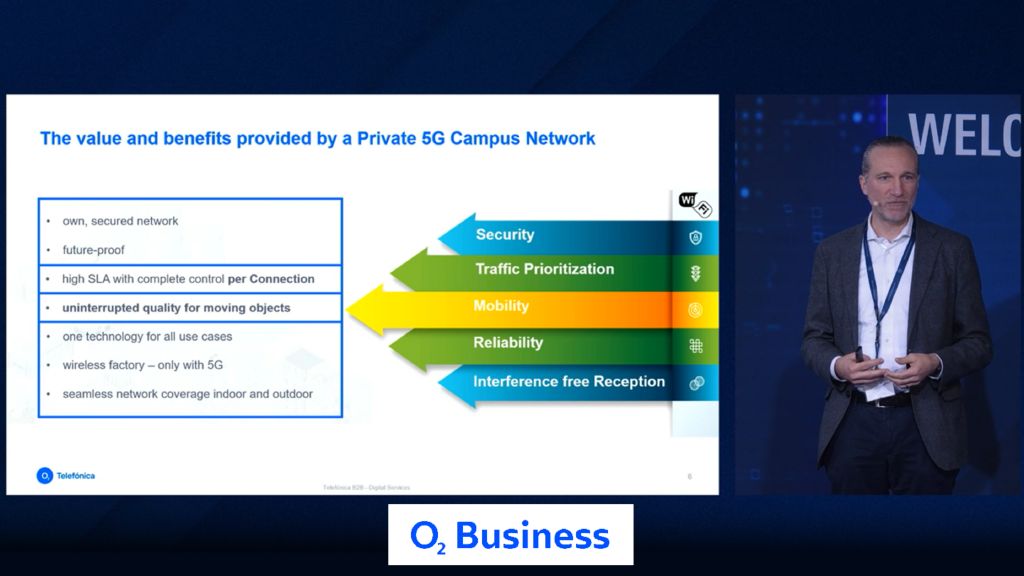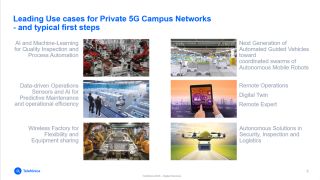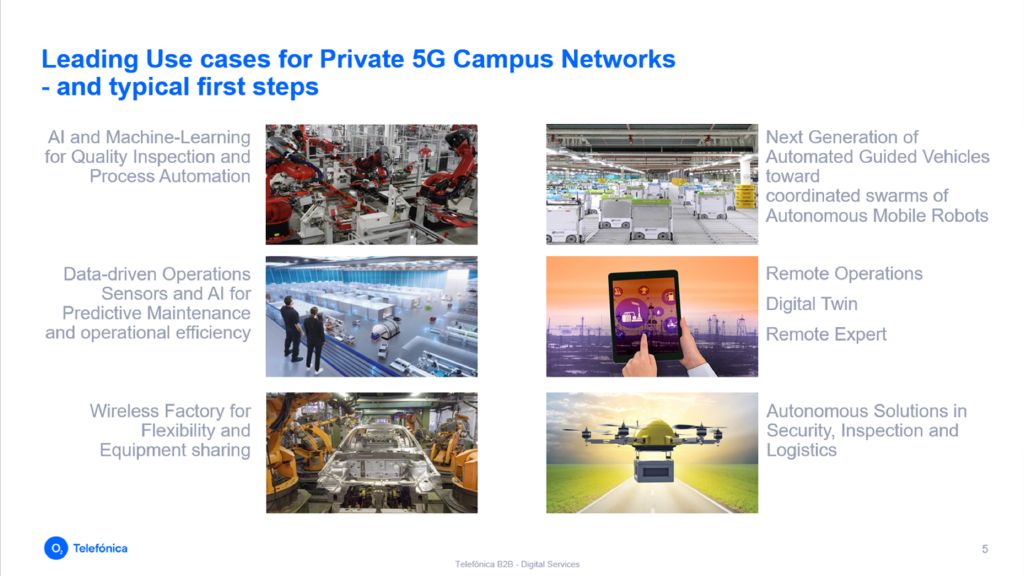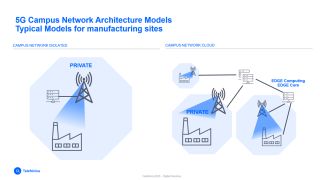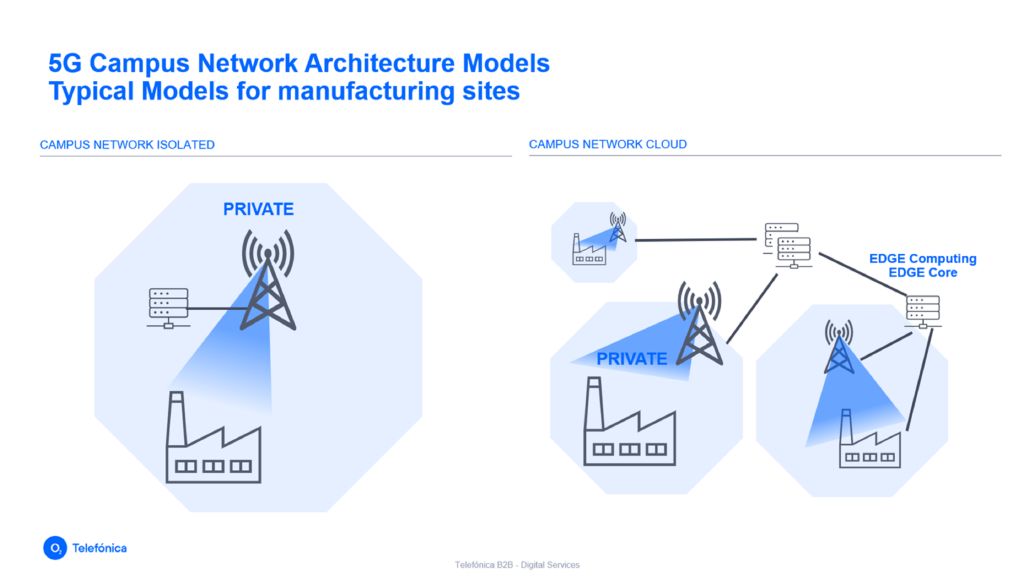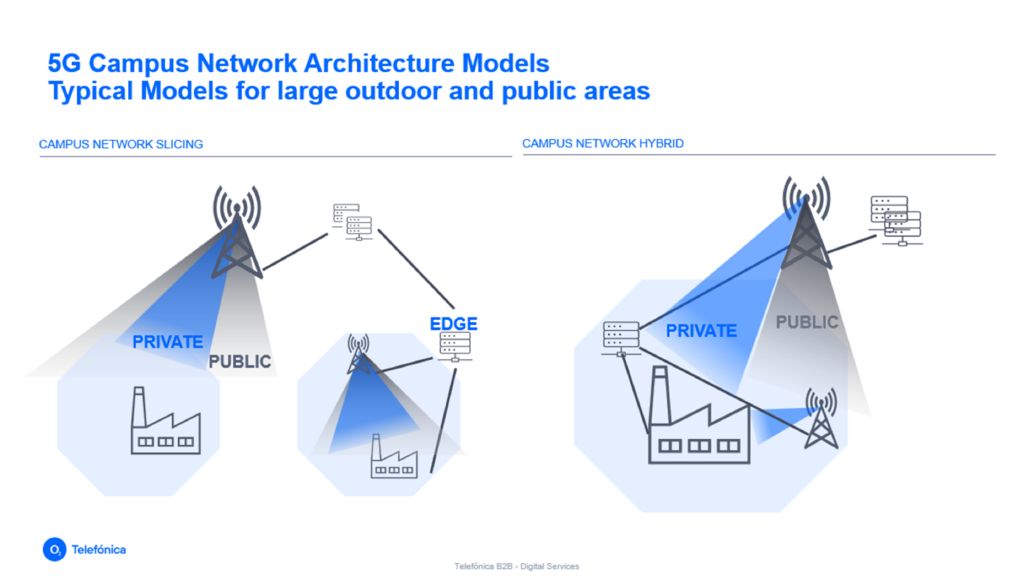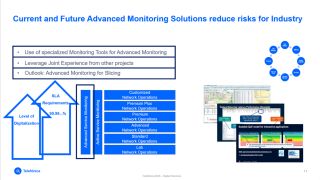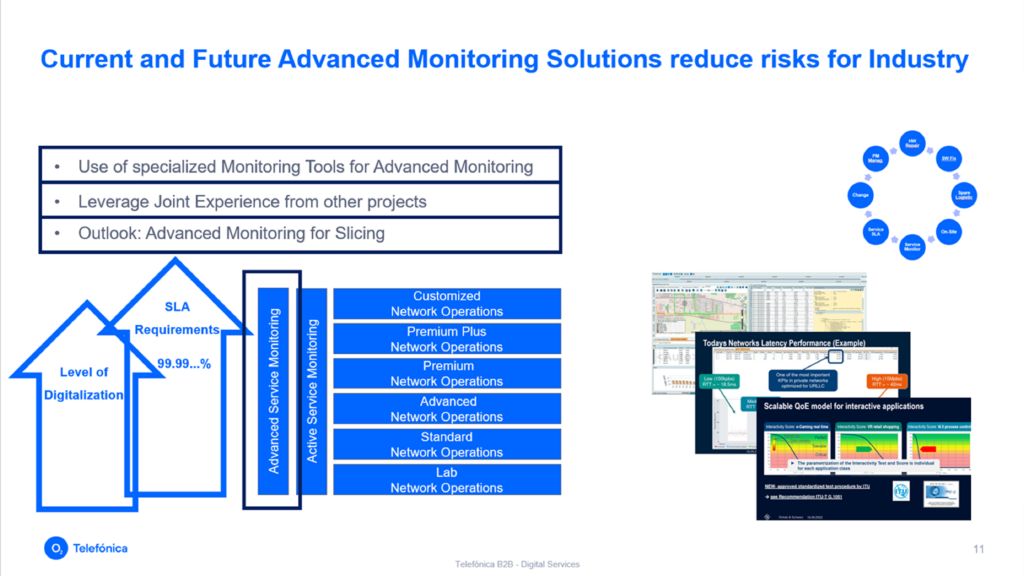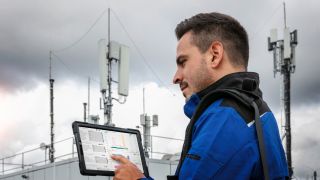Arnd Sibila:
You mentioned the Campus Network Hybrid. A follow-up question: Why do you see the hybrid network (public and private) as the long-term evolution for private campus networks?
Frank Schmidt-Küntzel:
In the long run, and with mobile frequencies growing higher into the Gigahertz area, the challenge of reliable industrial wireless connectivity is joint by the challenge of bringing high bandwidth classical mobile connectivity into the buildings.
Therefore, companies that need a highly reliable and low latency network and opt for a private 5G network will not want to invest in two separate mobile network systems for their indoor facilities. They want to use their private network infrastructure also for bringing mobile coverage into their factories and logistics halls. They opt for hybrid networks that offer a private dedicated core network, but their radio antennas are connected to two core networks, the private one and the public mobile network, hence offering both a purely local private network and public coverage with the same radio system.
On the other hand, companies starting with a Campus Network based on slicing may reach a point where their digitalization applications need a level of latency or reliability that can only be reached with a dedicated core.
Both company categories end up with a hybrid network, regardless of their respective starting point. And many companies select mobile operators instead of integrators as partners for private networks exactly for that reason, to have the option to move to a hybrid network later.
Arnd Sibila:
Can you maybe disclose selected Campus Network Projects that Telefónica O2 supported for customers that you think are most important and insightful?
Frank Schmidt-Küntzel:
It is widely known in the market that we started our journey with several private networks in the automotive industry, for test tracks and production halls, as early as 2017 for 4G and 2019 for 5G.
In recent years I would like to select three examples: We have implemented a private network for the Prinzhorn Hamburger Group in their main location in Austria to help them solve a major challenge, getting reliable connectivity to the last corner of their extremely challenging paper factory with tons of steel, tunnels and outdoor areas. This is currently enabling Prinzhorn, next to finally having security-relevant reachability for their workers and equipment, to develop more and more digitalization projects based on automation, digital twinning and simply the availability of data everywhere in the factory. By the way, this was one of the worldwide first international cooperations of mobile operators to allow a company to offer private networks crossing country borders.
Another example is a company doing crash tests where the measurement equipment was connected via cable, and 5G connectivity offers the obvious advantage to have all measurement equipment always connected within the area of the private network, gaining time and also cost, considering the cost of such cables.
The last example is more strategic, as a health investigation institute, the 6G Health Institute, has bought a “Campus Network Slicing” to perform their research on remote health and on connected patients. The Slicing technology allows the institute to easily add additional locations to the secure private research environment, and the private capacity ensures that important applications can rely on the performance of the network.
Arnd Sibila:
What are the top critical factors for ensuring seamless acceptance of private 5G networks, and from your expert perspective, what proactive measures can be taken to guarantee consistently reliable performance of the campus network?
Frank Schmidt-Küntzel:
Most companies opt for a private 5G network when the failure of connectivity, or its lack of performance stability has important economic or technical, or even safety consequences. The 5G technology is built for exactly these aspects, taking advantage of its real-time resource scheduler and the coordination through its core structure that will keep the benefits over WiFi for at least several standard generations, and possibly even forever due to WiFi backwards compatibility obligations.
What is important now is to match the operations processes with the performance potential of 5G, at least from the moment when the maximum performance is really needed. Redundancy obviously plays a major role to ensure short-term reaction, but also performance monitoring and professional operations expertise are key to make the most out of the network. In the area of monitoring for instance, Telefónica has decided to partner with Rohde & Schwarz to use and develop advanced monitoring solutions, allowing immediate identification of degradations and external influences before they become impacting. Our common interest is especially to investigate the performance of single applications, by testing on application level and applying patterns ensuring their performance.





